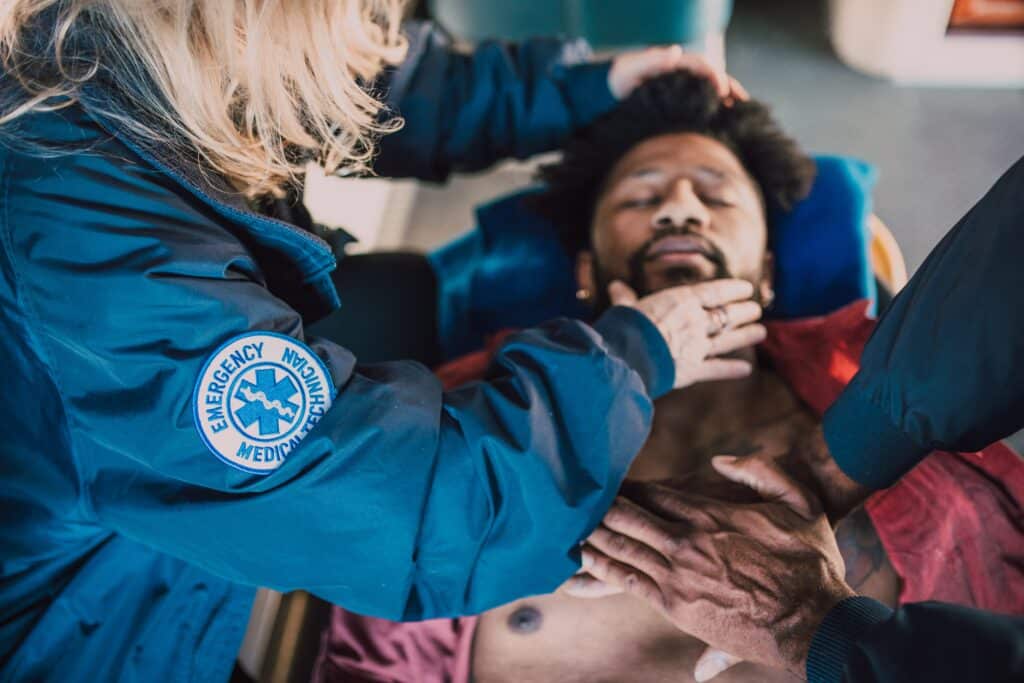It’s been more than a decade since the National Registry of Emergency Medical Technicians (NREMT) stopped using the certification designations EMT-B and EMT-Basic.
The change from EMT-B to EMT was not just in title. It was accompanied by an expanded set of knowledge and skill expectations for emergency medical technicians (EMTs). There is nothing “basic” about what an EMT learns or the skills he or she can perform. And they’re certainly not “Ambulance Drivers.”

Most states have made the transition to the new title, but many emergency medical service (EMS) providers continue to refer to some EMTs as “Basics.” Maybe it’s out of ignorance, or just an antiquated habit, but we need that to stop. It’s much more than just an inaccurate designation — it’s misleading to the public and gives the wrong impression regarding care and capabilities.
Looking Back at EMT Designations
The early terminology came from a haphazard system of state-by-state naming conventions. The NREMT itself started out with an “EMT-Ambulance” or “EMT-A,” later adding an “EMT-Non-Ambulance” designation. As a result of this confusing nomenclature, the NREMT came out with a new system in 2011 with the titles of:
- First Responder
- EMT
- Advanced EMT
- Paramedic.
I obtained my EMT-B certification (“B” for “Basic”) in 2008 and have been teaching EMTs for a decade. So, I can personally attest to the fact that the expectations of an EMT have grown significantly in that time. This is because EMTs are amazing at being first responders, and they’re more than up to the challenge of providing pre-hospital care to those who need it most.
Today’s EMTs
In North Carolina, an EMT is required to complete nearly 200 hours of classroom and skill training and another 48 hours of hands-on-clinical training. Candidates must master a substantial knowledge base related to human anatomy and physiology, common medical conditions, pathophysiology and pharmacology.
EMTs can perform complete physical examinations and patient assessments, obtain a differential diagnosis, formulate and begin a treatment plan — and they can do it all from your living room to the side of the highway. They know how to safely move you onto a stretcher, into an ambulance, and transport you to the appropriate facility. In addition, they are knowledgeable communicators with advanced healthcare providers, nurses and physicians, using specialized medical terminology to expedite the care of those they’re responsible for.
While the general public has no idea about how many hours of class and hands-on training are required to become an EMT — or how difficult skills testing can be — they also don’t know about credentialing exams and continuing education requirements. Most hear “Basic” and think back to a Scouting First Aid course they took 30 years ago.
Being an EMT provides many challenges and also satisfying rewards. Many use this certification as a steppingstone to more advanced practice (Paramedic, RN, MD), but many are completely comfortable serving as an EMT their entire career.
Let’s leave the term “Basic” to the First Aid folks. EMTs are highly trained pre-hospital healthcare professionals who are an essential part of the backbone of the nation’s emergency medical service (EMS) response. They deserve the title and our respect.
= = = = = = = = = =
About the Author: Kate Javes is a North Carolina Paramedic and Level 2 EMT Instructor at The National Center for Outdoor & Adventure Education. A former two-sport NCAA Division I athlete at Rutgers University, Kate received her Bachelor of Science degree in math, and a second bachelor’s degree in history from the United States Naval Academy in Annapolis, Md.
TALK TO US
Have any further questions about our courses, what you’ll learn, or what else to expect? Contact us, we’re here to help!
Leave a comment